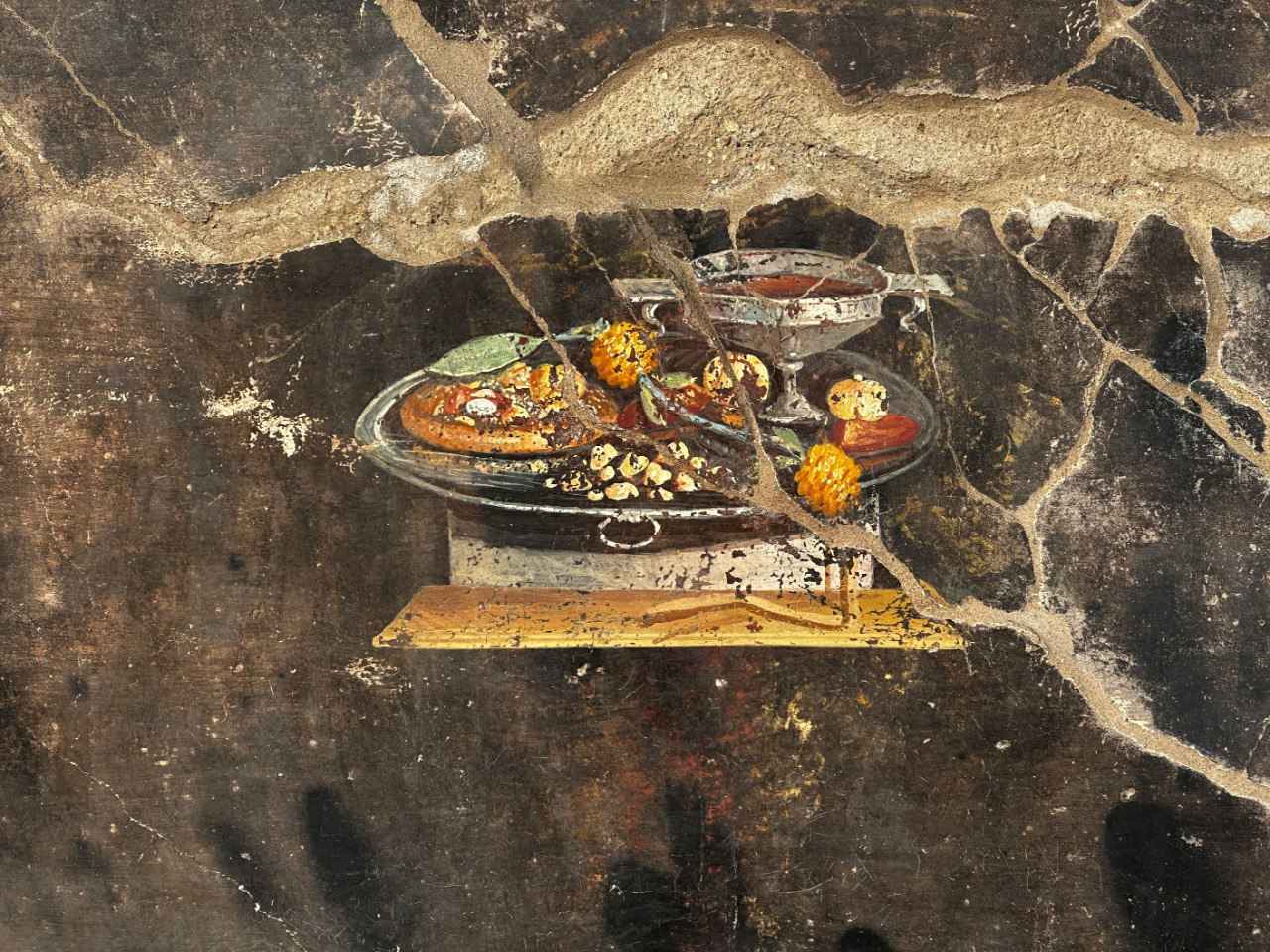Thessaloniki gets ready for its metro launch in November
The underground rapid transit lines have been under construction for almost two decades due to various project delays
 TheMayor.EU logo
TheMayor.EU logo And apparently, it was covered with fruit and was possibly sweet
How awesome is it that what could possibly be the ancestor of the much-beloved pizza was discovered on a mural painting in Pompeii, near Naples? The latter being a city forever associated with the tasty treat.
The Ancient Roman town, which was perfectly preserved in the wake of a Vesuvius eruption some two millennia ago, keeps on revealing new secrets as excavation works progress.
The latest discovery was a beautiful still-life fresco revealed in a house in Insula 10 of Regio IX district of the archaeological site. It shows a tray that contains various foods and a goblet of wine. But what caught the researchers’ attention was the round bread dish on the left, which remarkably resembles modern-day pizza.
However, it’s also clear that it couldn’t have been pizza as the classic ingredients in the classic Margherita didn’t even exist in Pompeii at the time – namely tomato and mozzarella. Tomatoes were only brought to Europe after the discovery of the Americas and even then they didn’t immediately catch on as a food option. Mozzarella, apparently, must have been invented sometime during the Middle Ages, with the earliest reference to it from the 12th century.
What the archaeologists say about the mural is that it probably represents a flat focaccia bread topped with various fruits (identified as a pomegranate and perhaps a date). The topping is seasoned with spices or perhaps rather with a type of pesto (moretum in Latin), indicated by yellowish and ochre dots. Moretum, though kind of like pesto, contained fresh cheese.

A closer look at the fresco. Source: Pompeii Sites
Researchers, however, say that the fresco possibly has religious or sacred connotations. In other words, what we see painted is some kind of immortalized votive offering.
From a passage in Virgil's Aeneid, we can deduce the custom at the time of placing fruit and other harvest products on sacrificial loaves, which act as "tables". The Aeneid recounts that when the Trojan heroes eat the fruit afterwards, even the loaves used as containers (tables), they realized that the prophecy according to which they would find a new homeland has occurred. It stated that “driven to unknown shores, having exhausted all food,” hunger would have led them to “devour even the tables”.
However, scientists say that these kinds of images were known as ‘xenia’. They represented the hospitable gifts offered to visiting guests, according to a Greek tradition during the Hellenistic period.
So, there you have it, it’s a bit of a matter of historical interpretation. Still, we can’t help but find something ironic about the fact that Italians today frown upon the idea of having pineapple (fruit) as a pizza topping.

The underground rapid transit lines have been under construction for almost two decades due to various project delays

Now you can get your wine in Talence by paying directly in Bitcoin

That’s because the state has to spend money on updating the railway infrastructure rather than subsidizing the cost of the popular pass

Rethinking renewable energy sources for the urban landscape

The examples, compiled by Beyond Fossil Fuels, can inform and inspire communities and entrepreneurs that still feel trepidation at the prospect of energy transition

Now you can get your wine in Talence by paying directly in Bitcoin

The 10th European Conference on Sustainable Cities and Towns (ESCT) sets the stage for stronger cooperation between the EU, national and local level to fast track Europe's transition to climate neutrality.

At least, that’s the promise made by the mayor of Paris, Anne Hidalgo

The underground rapid transit lines have been under construction for almost two decades due to various project delays

At least, that’s the promise made by the mayor of Paris, Anne Hidalgo

Hostal de Pinós is located in the geographical centre of the autonomous region

Despite its church-y name, the district has long been known as the hangout spot for the artsy crowds

Urban dwellers across the EU are having a say in making their surroundings friendlier to people and the environment.

Forests in the EU can help green the European construction industry and bolster a continent-wide push for architectural improvements.

Apply by 10 November and do your part for the transformation of European public spaces

An interview with the Mayor of a Polish city that seeks to reinvent itself

An interview with the newly elected ICLEI President and Mayor of Malmö

A conversation with the Mayor of Lisbon about the spirit and dimensions of innovation present in the Portuguese capital














